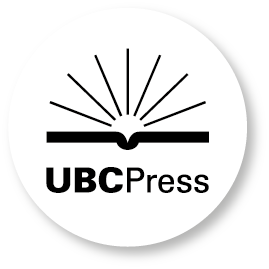Timothy Beatley
Showing 1-7 of 7 items.
Resilient Cities
Responding to Peak Oil and Climate Change
Island Press
- Copyright year: 2009
Green Cities of Europe
Global Lessons on Green Urbanism
Edited by Timothy Beatley
Island Press
With Green Cities of Europe, Beatley offers the North American planning community not only a vision of holistic sustainability, but a clear guide to accomplishing it at home.
- Copyright year: 2011
Resilient Cities, Second Edition
Overcoming Fossil Fuel Dependence
Island Press
In Resilient Cities, Second Edition, Peter Newman, Timothy Beatley, and Heather Boyer explore what it means to be resilient in an age of changing climate and growing inequity. Since the first edition was published in 2009, interest in resilience has surged, in part due to increasingly frequent and deadly natural disasters, and in part due to the contribution of our cities to climate change. The new initiatives and approaches from citizens and all levels of government show the promise as well as the challenges of creating cities that are truly resilient.
Resilient Cities, Second Edition reveals how cities around the world are working to become more resilient. The authors offer stories, insights, and inspiration for urban planners, policymakers, and professionals interested in creating more sustainable, equitable, and, eventually, regenerative cities. Most importantly, the book is about overcoming fear and generating hope in our cities. The challenge of resilient cities is to claim a different future that helps us regenerate the whole planet.
Resilient Cities, Second Edition reveals how cities around the world are working to become more resilient. The authors offer stories, insights, and inspiration for urban planners, policymakers, and professionals interested in creating more sustainable, equitable, and, eventually, regenerative cities. Most importantly, the book is about overcoming fear and generating hope in our cities. The challenge of resilient cities is to claim a different future that helps us regenerate the whole planet.
- Copyright year: 2017
Handbook of Biophilic City Planning & Design
Island Press
What if, even in the heart of a densely developed city, people could have meaningful encounters with nature?
The Handbook of Biophilic City Planning & Design offers practical advice and inspiration for ensuring that nature in the city is more than infrastructure—that it also creates an emotional connection to the earth and promotes well-being among urban residents. Divided into six parts, the Handbook introduces key ideas about biophilic urbanism, highlights urban biophilic innovations in more than a dozen global cities, and concludes with lessons and resources for advancing urban biophilia.
As the most comprehensive reference on the emerging field of biophilic urbanism, the Handbook is essential reading for students and practitioners looking to place nature at the core of their planning and design ideas.
The Handbook of Biophilic City Planning & Design offers practical advice and inspiration for ensuring that nature in the city is more than infrastructure—that it also creates an emotional connection to the earth and promotes well-being among urban residents. Divided into six parts, the Handbook introduces key ideas about biophilic urbanism, highlights urban biophilic innovations in more than a dozen global cities, and concludes with lessons and resources for advancing urban biophilia.
As the most comprehensive reference on the emerging field of biophilic urbanism, the Handbook is essential reading for students and practitioners looking to place nature at the core of their planning and design ideas.
- Copyright year: 2016
Habitat Conservation Planning
Endangered Species and Urban Growth
University of Texas Press
This pioneering study focuses on a new tool for resolving the land-use conflict--the creation of habitat conservation plans.
- Copyright year: 1994
The Bird-Friendly City
Creating Safe Urban Habitats
Island Press
How does a bird experience a city? A backyard? A park? As the world has become more urban, noisier from increased traffic, and brighter from streetlights and office buildings, it has also become more dangerous for countless species of birds. In The Bird-Friendly City, Timothy Beatley, a longtime advocate for intertwining the built and natural environments, takes readers on a global tour of cities that are reinventing the status quo with birds in mind. Efforts span a fascinating breadth of approaches: public education, urban planning and design, habitat restoration, architecture, art, civil disobedience, and more. Readers will come away motivated to implement and advocate for bird-friendly changes, drawing from inspiring examples that show it’s possible to make our urban environments more welcoming for many bird species.
- Copyright year: 2020
Biophilic Cities
Integrating Nature into Urban Design and Planning
Island Press
A biophilic city, says Beatley, is a place that learns from nature and incorporates natural forms and images into its buildings and cityscapes. Biophilic Cities outlines the essential elements of a biophilic city, and provides examples and stories about cities that have successfully integrated biophilic elements – from the building to the regional level – around the world.
- Copyright year: 2010
Stay Informed
Subscribe nowRecent News





